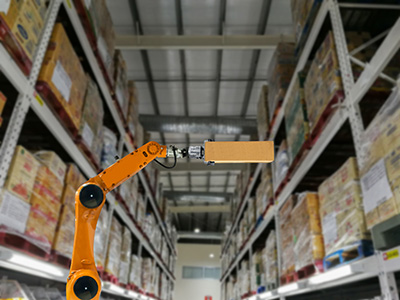End-of-Arm Tooling in Robots

When looking at a robot arm, most engineers and operators notice a critical part of the system, the end-of-arm tooling. The end-of-arm tooling can directly manipulate the parts and components being produced or processed. Although many types of tooling appear similar, even the subtlest changes can have a profound impact on an entire automation system’s efficiency.
Applications for End-of-Arm-Tooling
End-of-arm tooling (EOAT) can be flexible for a wide array of applications. But it can also be very specific to a need. EOATs can grip, drill, cut, weld, inspect, and more. When properly selected, EOAT increases quality, throughput, and reliability. Find out how custom robotic welding tooling cut lead times for a manufacturer of tractor cabs.
EOAT advancements have also led to new solutions like random bin picking. In this application, the end-of-arm tooling is able to pick a part from a bin filled with parts of different shapes and sizes. EOAT must integrate seamlessly with vision systems to make this possible.
A robot’s application often dictates the way its EOAT will be powered. Pneumatic EOATs are easy to integrate and deliver a lot of power in a compact form factor. Hydraulic EOATs can generate very high clamping forces. There are also electrical EOATs, which reduces some of the complexity of the system by eliminating the need to run tubing to the robot arm.
Trends in End-of-Arm Tooling
Manufacturing is faster and more efficient than ever thanks to advances in the end-of-arm tooling designed for today’s robots. Further speeding up the developments is the ability to create new EOATs with 3D printing technology. 3D printing lets engineers use additive manufacturing to create EOAT prototypes. They can try out new EOATs faster and easier, further validating the proof of concept.
Read end-of-arm robot tooling case studies that show how EOATs offer innovative solutions, improved flexibility, and faster lead times.
Posted in Robotic Applications